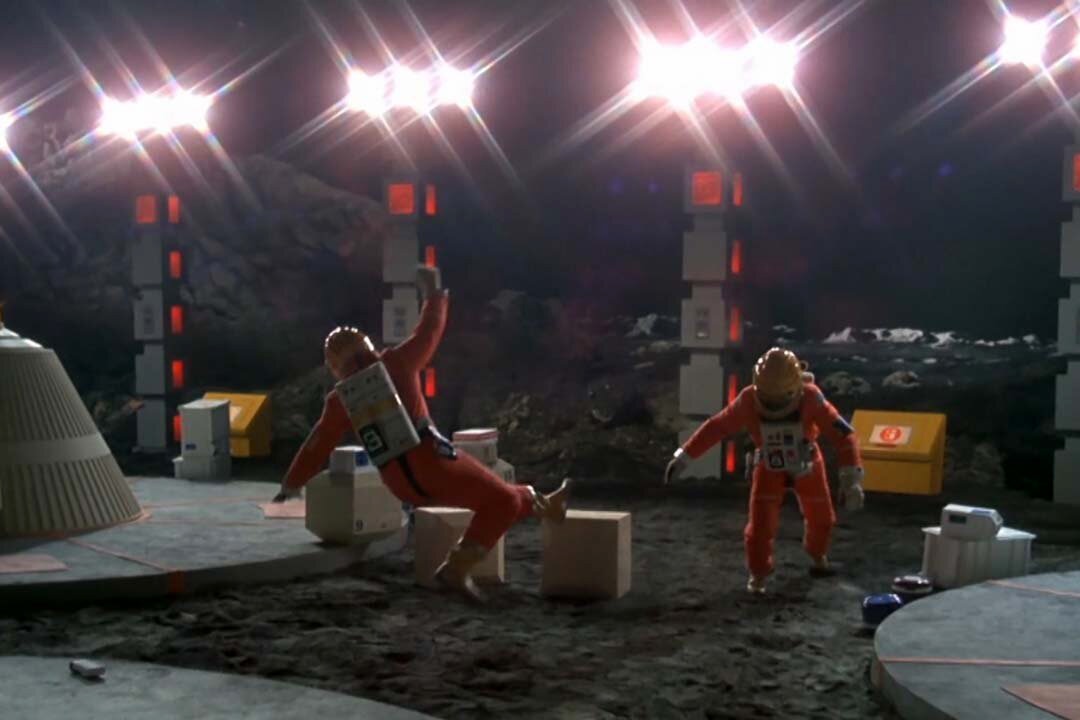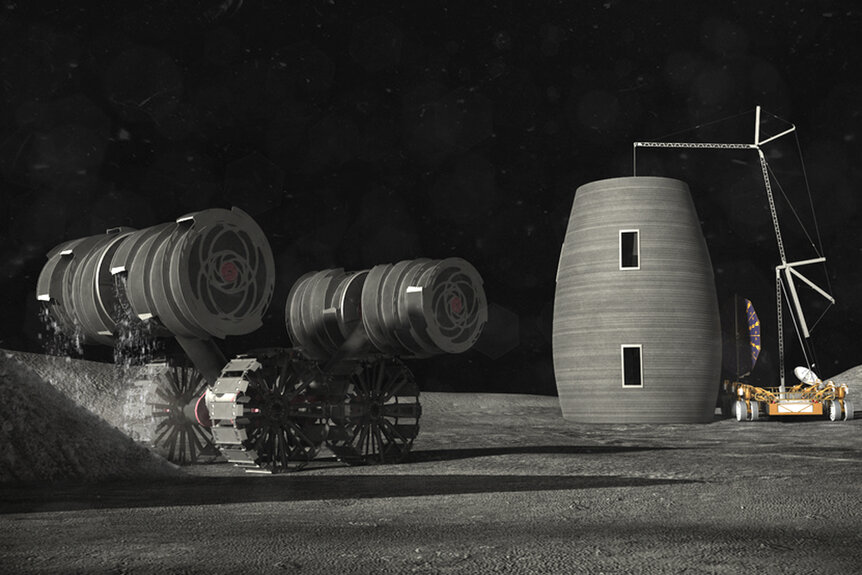Create a free profile to get unlimited access to exclusive videos, sweepstakes, and more!
The Moon bases of tomorrow might be made of dust and potato chips
We want our Moon house sour cream and onion flavored.

Humans love to put themselves at the top of the natural pecking order, the seeming pinnacle of Earthly creation, but might we suggest an alternative: the potato. A starchy tuber, native to the Americas, the potato was first domesticated in Peru and Bolivia roughly 8,000 years ago. Eventually, they made their way from their ancestral home to the rest of the world, where it is estimated that they are responsible for up to a quarter of population growth in the Old World, between the 18th and 20th centuries.
Today, potatoes are the fourth most important staple crop in the world, behind only rice, wheat, and maize. The success of these unglamourous root vegetables comes down, at least in part, to their versatility. You can have potatoes baked, boiled, mashed, fried, sliced… and now you can put them in the bricks that make up your vacation home on the Moon.
All signs point toward humanity returning to the Moon in the very near future. Artemis III, the first crewed landing mission since Apollo 17, is scheduled for some time in 2025 and will mark the starting point of a more permanent human presence on the lunar surface. Of course, if we’re going to send astronauts to the Moon, Mars, and beyond for an extended stay, they’re going to need somewhere to put up their feet. We’re going to have to build a Moon base.
RELATED: A lunar base could be made of bricks 3D printed from lunar dust
That’s something we’ve never done before, but it’s something we’ve thought a lot about. In the classic science fiction series Space: 1999 (streaming now on Peacock!), humanity builds a vast research station on the Moon, known as Moonbase Alpha. They also build nuclear waste dumping sites on the Moon’s far side. Exposure to an unknown form of magnetic radiation causes a thermonuclear explosion of a kind heretofore unimagined. On the 13th of September 1999, along this fictional timeline, the Moon blasted out of Earth’s orbit and into deep space, carrying the inhabitants of Moonbase Alpha with it. In effect, the whole of the Moon became an interstellar spacecraft, moving under its own nuclear-powered steam, through the vastness of space.
If you want to build a Moon base or a spacecraft, using the Moon itself as a starting point isn’t a half-bad idea. With Artemis III racing toward us, we are preparing for some of the most difficult construction projects in human history. Scientists have so far proposed a number of solutions for building the research stations, homes, and spacecraft we’re going to need for the next phase of human exploration in space, many of which lean on soil from the destination.
We could cart all of our building materials from Earth, but getting them off-world and to the Moon or Mars is a considerable task. Anything we can gather on-site will make the whole endeavor a lot easier to accomplish. The trouble is, Moon dust is pretty good at being Moon dust and not very good at being anything else. If you try pressing Moon dust into a brick, it won’t want to stay together. That’s because it is bone dry, baked by the unfiltered light of the Sun over billions of years. Put enough of it between you and the rest of space and it will protect you from radiation and micrometeors, but you need a way for it to stick together.
We could do it with water, or by mixing it with more exotic materials mined from the Moon or Mars, but those processes come with their own challenges, including weight, energy, and custom-built mining equipment. Now, a paper published in the journal Open Engineering, has proposed a solution we can quite literally grow in the dirt.
The process for building space bricks relies on naturally occurring biopolymers as a binding agent. Another way to say that is they took the starch out of potatoes, mixed it with Moon dirt, and turned it into something like concrete. A similar process has been tested on Earth, as an alternative to existing cement and concrete, but those efforts ran into limitations in moisture sensitivity. In short, when the potato bricks get too wet, they fall apart. On Mars or the Moon, however, that isn’t a concern. In that respect, the desiccated nature of alien soils actually works in our favor.
Researchers mixed dried potatoes with simulated Martian soil to create a substance they’ve dubbed StarCrete. The combined mixture produced something akin to concrete but significantly stronger. Laboratory tests demonstrated a compressive strength of 72 Megapascals. That means they pressed on a StarCrete brick with more than 10,000 pounds of force per square inch, before it broke. That’s more than twice the strength of conventional concrete on Earth. If you want it even stronger, they found that adding magnesium chloride, a type of salt commonly found on the Martian surface, improved the compressive strength.
StarCrete made with lunar regolith was natively stronger than even Martian StarCrete, and roughly three times stronger than conventional concrete, with a compressive strength of more than 91 Megapascals. The starchy biopolymers of a humble potato grab hold of alien dust grains and trap them in a matrix which, under extraterrestrial conditions, appears to work incredibly well as a building material.
Researchers estimate that 25 kilograms (55 pounds) of potato chips contain enough starch to make roughly half a ton of StarCrete. That’s enough to make about 213 bricks. We’re going to need a lot of potatoes if we want to live inside them like we’re in a futuristic Roald Dahl story. Feel free to eat any leftovers, when the renovations are finished.
We hope the crew of Space: 1999 stocked up on potato chips before they took off, both for repairs and emotional support. Catch them on Peacock, and don’t forget a snack.



























